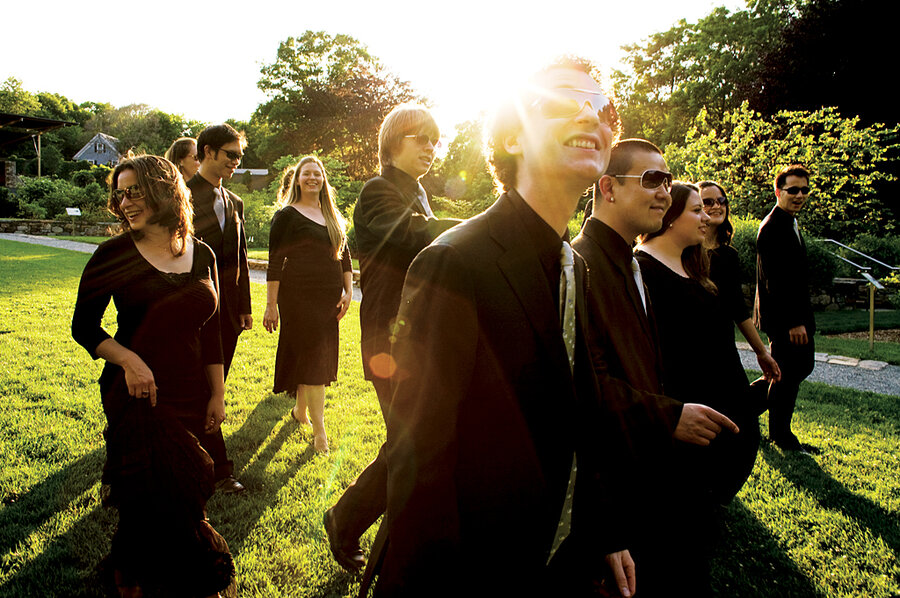A chamber orchestra in ... a bar?
Loading...
Imagine you’re walking past a bar one evening as a young couple opens the door to head in. You catch the sound of the act inside, but it’s no punk band – it’s a small orchestra playing Jimi Hendrix.
Chamber orchestras (smaller than symphony orchestras) are increasingly pushing long-held stereotypes that have defined them as elitist and predictable by performing in nightclubs and firehouses, on public transportation, or atop buildings, often forgoing traditional music for modern works.
“There’s something very important happening, no question,” says Jesse Rosen, president of the League of American Orchestras. “To me, it looks like an explosion of creativity and a broadening of the palate.”
In a world where finding a job in a traditional orchestra has become increasingly difficult, in part because of a decline of public interest in classical music, alternative venues and innovative chamber orchestras have not only become bread-and-butter gigs for many young and highly trained classical musicians, they’re also changing classical music’s image.
From Portland, Ore.-born Classical Revolution PDX to New York City’s The Knights, forward-thinking chamber orchestras have developed distinctive profiles in their repertoire, their roles, and their connection to community.
In Boston, A Far Cry formed in 2007 to create an entirely democratic orchestra (with no conductor or music director), and has experimented with programming for children and educational institutions. They rehearse in a storefront open to the public and use outdoor speakers to pipe their music out to the street.
The most successful orchestras, says David Ludwig, a composer and a dean at the Curtis Institute of Music in Philadelphia, “are finding new ways to let the audiences in to what we’re doing ... and people in the audience respond really positively to that.”
A Far Cry has done pop-up performances at farmers’ markets, the finish of a race, and subway stations, says Alex Fortes, a violinist and the group’s artistic committee chair. “Our upcoming album, ‘Dreams and Prayers,’ was recorded at a beautiful Romanesque-style church in Fall River, Mass., that felt very appropriate to the themes of mysticism in the music we were recording.”





